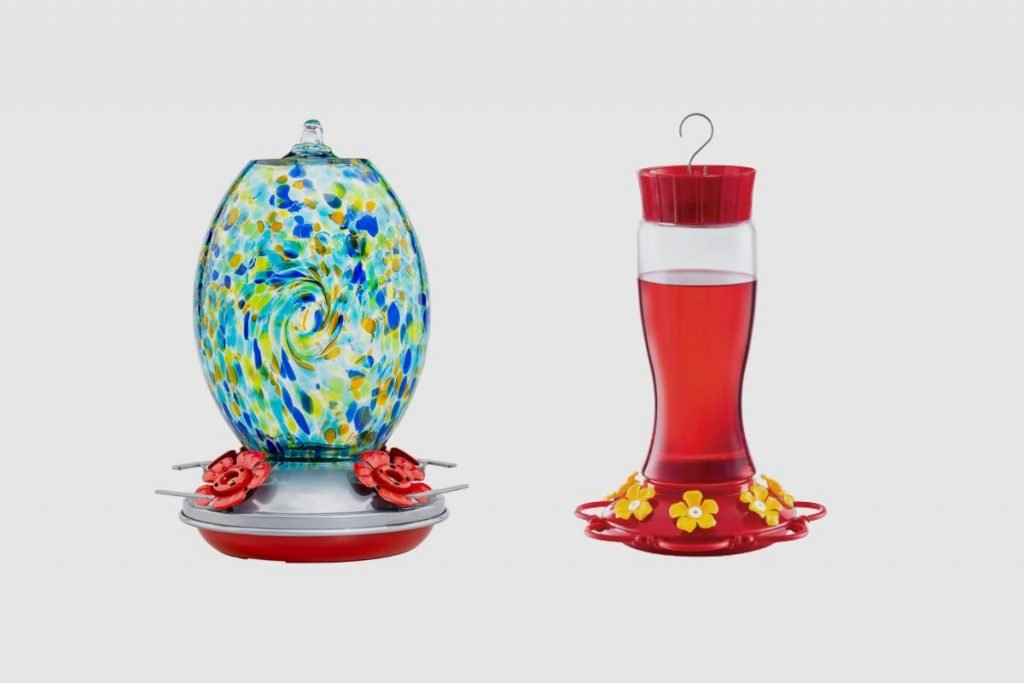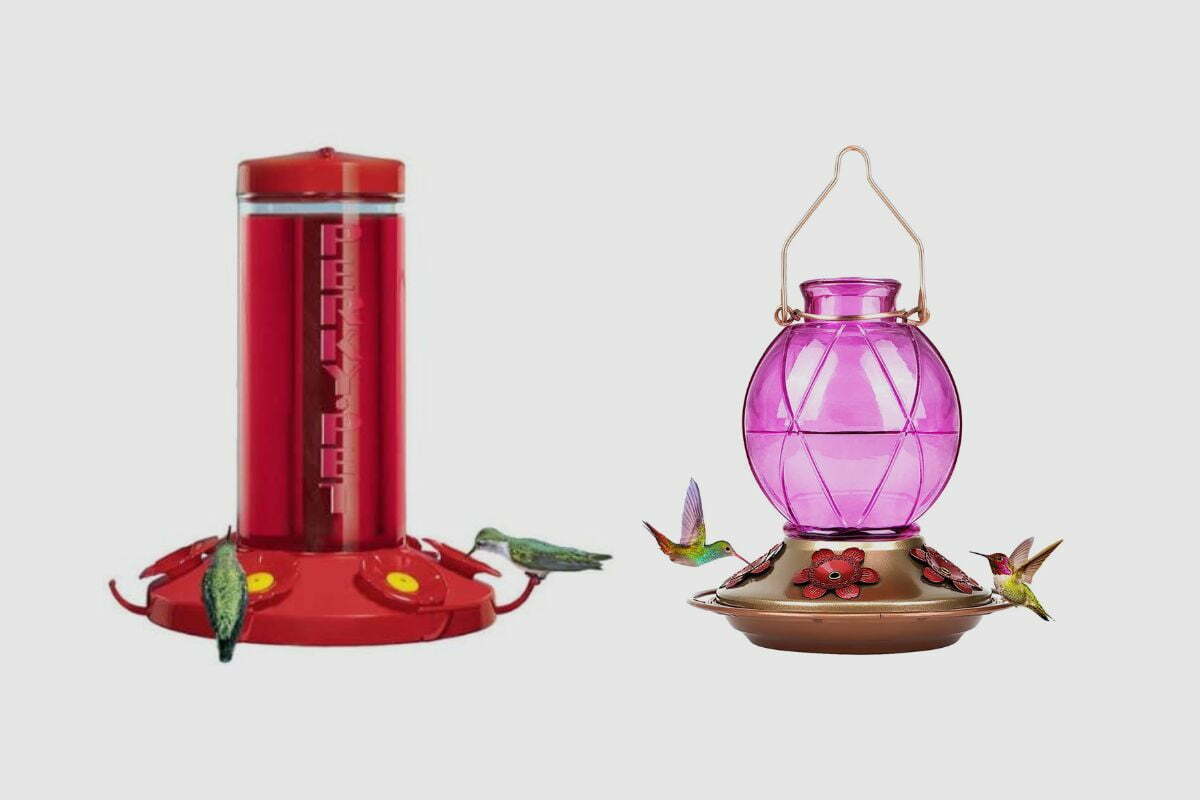When purchasing a hummingbird feeder, there are several important factors to consider that will determine its attractiveness to hummingbirds, its durability, and its suitability for your specific circumstances. These factors include size, ease of cleaning, material, color, and the presence of ant and bee guards. Let’s explore why each of these features is important and how they can enhance your hummingbird feeding experience.
Unraveling the Features of an Ideal Hummingbird Feeder
Size Matters
Size is a crucial consideration when choosing a hummingbird feeder. The size of the feeder determines how many birds can feed at once and how often you’ll need to refill it. If you have a small garden with only a few hummingbird visitors, a smaller feeder may be sufficient. However, if you have a larger hummingbird population or prefer not to refill the feeder frequently, a larger feeder would be more suitable.
Ease of Cleaning
Regular cleaning of your hummingbird feeder is essential for the birds’ health. Hummingbird nectar can quickly ferment, especially in warm weather, which can be harmful to the birds. Therefore, it’s important to choose a feeder that is easy to dismantle and clean. Look for feeders with wide openings that allow you to reach all parts effortlessly.
Material
The material of your hummingbird feeder plays a significant role in its longevity and attractiveness to birds. Feeders are commonly made of either plastic or glass. Plastic feeders are lightweight and less fragile, but they may not withstand harsh weather and sun exposure as well as glass feeders. Glass feeders, although heavier and potentially more fragile, often last longer and can be more visually appealing.
Color
Hummingbirds are naturally attracted to bright colors, particularly red. Therefore, choosing a feeder that incorporates these colors, especially red, can attract more hummingbirds to your garden. However, it’s important to avoid feeders with painted designs, as the paint can chip off and contaminate the nectar.
Ant and Bee Guards
It’s not just hummingbirds that are attracted to the sweet nectar in feeders. Ants and bees may also find their way to the feeder, deterring hummingbirds from feeding. To prevent this, consider a feeder with built-in ant and bee guards. These features will keep pests away from the nectar while allowing the hummingbirds to feed in peace.

Beyond the Basics: Additional Considerations
Feeder Placement
While not a feature of the feeder itself, the placement of the feeder in your garden can impact its attractiveness to hummingbirds. Hang the feeder in a quiet, shaded location, away from busy areas and direct sunlight. Direct sunlight can cause the nectar to ferment more quickly, potentially harming the birds.
Nectar Capacity
Consider the nectar capacity of the feeder based on the size of your feeder and the number of hummingbirds visiting your garden. If you have many hummingbirds, a larger capacity feeder may be more convenient, as it will require less frequent refilling.
Price and Reviews
Price is an important factor when purchasing a hummingbird feeder, but it should not be the sole determining factor. Read reviews and consider the longevity and features of the feeder. Sometimes, spending a bit more upfront on a higher-quality feeder can save you money in the long run if it lasts longer and performs better.
Accessibility and Visibility
In addition to the feeder’s features, consider your own enjoyment and convenience. Choose a feeder that is easily visible from your preferred viewing location, whether that’s inside your home or from a favorite spot in your garden. Additionally, ensure that the feeder is easily accessible for cleaning and refilling. If it’s difficult to reach, you may be less likely to maintain it properly.
Resilience to Weather Conditions
Take into account the weather conditions in your region when selecting a hummingbird feeder. If you live in an area with strong winds or heavy snowfall, a lightweight plastic feeder may not be the best option. Instead, opt for a sturdier glass feeder that can withstand harsh weather conditions. Conversely, if you live in a hot climate, consider that nectar can spoil quickly in the heat. You may need to choose a smaller feeder that requires more frequent refilling to ensure the nectar stays fresh.
Final Thoughts
Choosing a hummingbird feeder is more than just a purchase—it’s an invitation. It’s an invitation to witness nature’s most enchanting ballet right in your own backyard. Imagine the delight of seeing the first hummingbird fluttering around your carefully chosen feeder, the anticipation as the birds become regular visitors, and the satisfaction of providing a nourishing oasis for these delightful creatures. Your chosen feeder is not just an item hanging in your garden—it’s a symbol of your connection to the natural world and a bridge between your daily life and the remarkable universe of hummingbirds.
But let’s take a moment to consider the bigger picture. In a world that often feels hurried and disconnected, could this simple act of choosing a hummingbird feeder be a step towards something profound? Can it help us reconnect with nature, appreciate the simple joys of life, and remind us of our place in the grand scheme of things?
Indeed, when you’re deciding what to look for when buying a hummingbird feeder, you’re also answering a deeper, more personal question: What kind of relationship do you want to have with the natural world? As you ponder this question, remember that every choice we make is a reflection of our values and desires.
FAQs – What Should You Look For When Buying a Hummingbird Feeder?
Q: Why is the size of a hummingbird feeder important?
A: The size of a hummingbird feeder determines how many birds can feed at once and how often you’ll need to refill it. Larger feeders can accommodate more birds and require less frequent refilling, but they may be overwhelming if you only have a few hummingbirds visiting your garden.
Q: How often should I clean my hummingbird feeder?
A: It is recommended to clean your hummingbird feeder at least once a week or more frequently in hot weather. Regular cleaning prevents the fermentation of the nectar, which could harm the birds.
Q: Are glass hummingbird feeders better than plastic ones?
A: Both glass and plastic feeders have their advantages and disadvantages. Glass feeders are generally more durable and can withstand harsh weather conditions better, but they are heavier and can break more easily. Plastic feeders are lighter and less likely to break, but they may not endure extreme weather as well.
Q: Why should a hummingbird feeder be brightly colored, particularly red?
A: Hummingbirds are naturally attracted to bright colors, especially red. Having a feeder that incorporates these colors can attract more hummingbirds to your garden.
Q: What is the purpose of ant and bee guards on a hummingbird feeder?
A: Ant and bee guards on a hummingbird feeder prevent these pests from reaching the nectar, allowing the hummingbirds to feed peacefully without being deterred.
Q: Where is the best place to hang a hummingbird feeder in my garden?
A: The ideal place to hang a hummingbird feeder is in a quiet, shaded location, away from busy areas and direct sunlight. Direct sunlight can cause the nectar to ferment more quickly.
Q: Does the nectar capacity of a hummingbird feeder matter?
A: Yes, the nectar capacity of a feeder can impact how often you need to refill it. If you have many hummingbirds visiting, a larger capacity feeder might be more convenient.
Q: How can I make my hummingbird feeder more visible for my own viewing pleasure?
A: Choose a location for the feeder that is easily visible from your preferred viewing spot, whether that’s inside your house or a particular place in your garden. This way, you can enjoy watching the hummingbirds feed.
Q: How does weather impact the choice of a hummingbird feeder?
A: If you live in an area with strong winds or heavy snowfall, a sturdier glass feeder might be more suitable. On the other hand, in hot climates, nectar can spoil quickly, so a smaller feeder requiring more frequent refilling might be a better choice.
Q: Can choosing a hummingbird feeder have a bigger impact beyond attracting birds to my garden?
A: Absolutely. Choosing a hummingbird feeder is a step towards reconnecting with nature, appreciating the simple joys of life, and understanding our place in the grand scheme of things. It’s a personal reflection of your relationship with the natural world.
